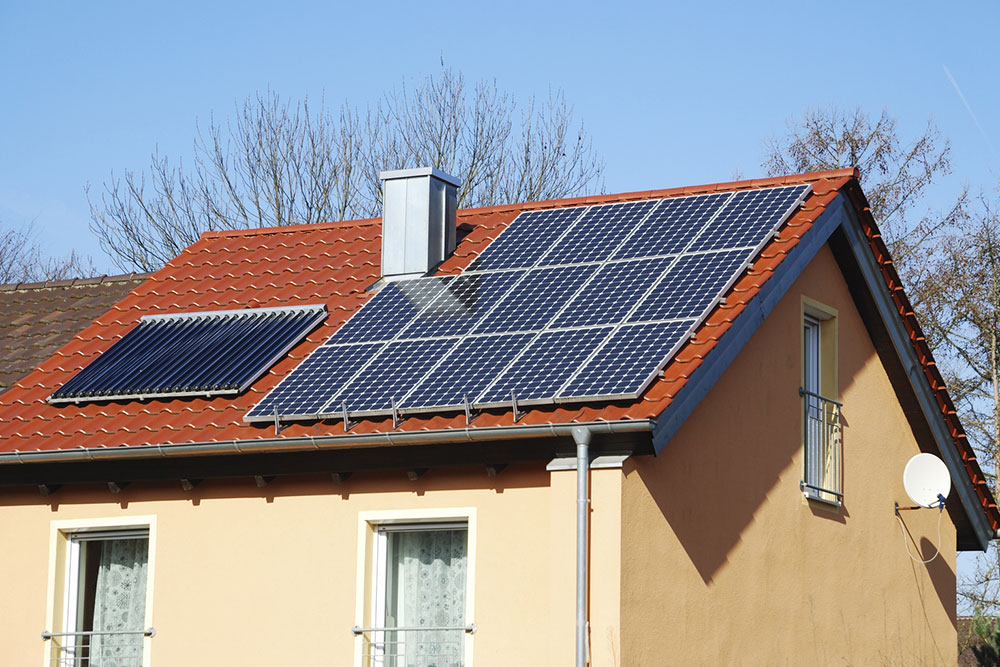Mexico's Solar Power Revolution: Unlocking the Future of Renewable Energy
Mexico is experiencing a significant boom in solar power, driven by favorable policies, technological innovations, and environmental goals. The sector has seen rapid growth with large projects and international investments, contributing to energy independence, job creation, and ecological benefits. Despite challenges like infrastructure and regulation, the country’s commitment to renewable energy and future innovations promises sustained expansion. This article highlights Mexico's journey, current achievements, key industry players, and opportunities to harness solar power for a sustainable future, making it a regional leader in renewable energy development.

Mexico's Solar Power Revolution: Unlocking the Future of Renewable Energy
In the global effort to address climate change and transition toward sustainable energy sources, Mexico has emerged as a significant player in the solar energy sector. Thanks to its abundant sunshine, strategic geographical location, and progressive policies, the country is witnessing a remarkable surge in solar power development. This comprehensive growth not only enhances Mexico’s energy independence but also contributes significantly to environmental preservation, economic development, and social well-being. In this extensive analysis, we delve into the evolving landscape, key players, benefits, challenges, and future prospects of Mexico’s burgeoning solar industry.
Tracking the Growth of Mexico’s Solar Industry
Historical Development and Policy Evolution
Mexico’s journey into solar energy began gaining momentum in the early 2000s, as the nation sought alternatives to its heavy reliance on oil exports. Recognizing the need for diversification and environmental sustainability, the government initiated policies to encourage renewable energy investments. The landmark 2013 Energy Reform Law marked a pivotal moment, opening Mexico’s energy market to private entities and fostering a competitive environment for renewable projects.
Over the past decade, this reform has propelled Mexico from modest solar deployments to a full-fledged industry boom. In response to growing global and domestic demand for clean energy, the country has prioritized the development of solar infrastructure, attracting investment and technological innovation. Today, Mexico’s solar capacity surpasses 5,000 MW, reflecting a trajectory of rapid advancement fueled by government incentives, technological breakthroughs, and heightened environmental awareness among its population.
Recent statistics indicate that Mexico’s solar capacity reached an impressive 5,000 MW in 2022, cementing its status as one of Latin America’s leading renewable energy markets. This growth is a result of multiple factors such as proactive government policies like tax benefits, streamlined licensing procedures, and support for grid integration projects. Additionally, advancements in solar technology and decreasing manufacturing costs have made solar power more accessible and economically viable across different sectors.
Major Companies and Landmark Projects
The Mexican solar sector has attracted prominent renewable energy companies, both domestic and international. Industry leaders like Enel Green Power, Iberdrola, and Grupo Dragón have spearheaded large-scale projects, significantly boosting capacity and visibility of solar power within the country's energy mix.
One of Mexico’s most ambitious solar projects is the Villanueva Solar Plant, renowned as Latin America’s largest solar farm with an installed capacity of 828 MW. This project exemplifies Mexico’s commitment to expanding its renewable footprint. Another notable project is the Don José Solar Park with 238 MW, further illustrating the country’s dedication to large-scale, sustainable energy infrastructures.
These projects not only generate substantial amounts of electricity but also generate employment opportunities, stimulate local economies, and promote technological innovation. The growth of such mega-projects symbolizes Mexico’s serious intent to meet its renewable energy targets and reduce its carbon footprint.
Advantages of Embracing Solar Power in Mexico
Adopting solar power in Mexico offers numerous benefits spanning environmental, economic, and social spheres. This section explores these advantages in detail to highlight why solar energy is a cornerstone of Mexico’s sustainable development strategy.
Environmental Benefits and Climate Commitments
Solar energy is quintessentially clean and sustainable, producing electricity without emitting greenhouse gases or pollutants. Mexico’s increased reliance on solar reduces its overall carbon footprint and aligns with national commitments made under the Paris Agreement. Transitioning to renewable energy contributes to slowing climate change and preserving vital ecosystems.
Economic Growth Facilitator and Job Creator
The solar industry has become a significant source of employment, creating thousands of jobs in manufacturing, installation, maintenance, and research sectors. Moreover, investment flow into solar projects stimulates economic development, attracting funding from foreign investors and fostering local entrepreneurial ventures. As solar technology becomes more affordable, consumers and businesses can benefit from lower electricity costs, further boosting the economy.
Achieving Energy Independence and Stability
Developing domestic solar resources enhances Mexico’s energy autonomy, decreasing its dependence on imported fuels and volatile global oil markets. A diversified energy mix, bolstered by renewable sources, fosters greater resilience against supply disruptions and price fluctuations, ensuring a stable energy supply for future generations.
Rural Electrification and Social Development
One of the most impactful applications of solar energy is providing electricity to remote rural communities, often underserved by traditional grid infrastructure. Off-grid solar solutions improve living standards, enable better access to education and healthcare, and promote social equality across diverse regions of Mexico.
Overcoming Challenges: Obstacles in Mexico’s Solar Sector
Despite remarkable progress, several hurdles hinder the full realization of Mexico’s solar potential. Addressing these challenges is critical for sustainable growth and sector maturity.
Regulatory and Policy Constraints
While policy reforms have spurred industry growth, ongoing regulatory uncertainties and bureaucratic delays can deter investment. The need for clearer policies, long-term incentives, and consistent regulatory frameworks remains vital to providing a stable environment for investors and developers.
Grid Infrastructure and Technical Integration
Integrating large-scale solar farms into Mexico’s existing grid infrastructure requires significant upgrades. Transmission capacity, grid management technology, and storage solutions must be enhanced to handle variability in solar power generation and ensure efficient distribution across regions.
Financial Challenges and Investment Risks
High capital requirements for large solar projects pose funding challenges. Although financial instruments and international funding mechanisms are available, securing consistent and affordable financing remains complex, necessitating innovative approaches and public-private partnerships.
Public Awareness and Education Needs
Wider acceptance of solar solutions depends on effective education campaigns. Reducing misconceptions about solar costs, efficiency, and reliability can foster more community-level support and accelerate adoption.
Looking Forward: Opportunities and Future Directions
Mexico’s solar industry stands at an inflection point with promising avenues for further growth. Investment in new technologies, policy enhancements, and expanded market access are critical for sustained progress.
Technological Innovations Fueling Growth
Emerging advancements such as high-efficiency solar panels, bifacial modules, energy storage solutions, and innovative materials like perovskite cells promise to lower costs and improve performance. These innovations will make solar power more accessible for residential, commercial, and utility-scale applications.
Policy Support and International Collaboration
Strategic governmental incentives, tax benefits, and international partnerships are essential for scaling sector growth. Facilitating technology transfer, fostering research, and providing capacity-building initiatives will further strengthen Mexico’s renewable landscape.
Expanding Market Opportunities
Encouraging rooftop solar installations in residential and commercial buildings through incentives and accessible financing options can unlock significant untapped potential. Sector-specific policies can accelerate adoption among small and medium enterprises, households, and industrial facilities.
Sustainability Commitments and Global Climate Goals
Mexico’s dedication to meet international climate targets will continue to drive investment and development. Collaboration with global partners and adherence to sustainability standards will reinforce the country’s leadership role in renewable energy.
Conclusion
The future of Mexico’s solar industry is promising, anchored by favorable conditions, technological innovations, and policy frameworks. Despite existing challenges, the sector’s environmental, economic, and social benefits make it a central pillar of Mexico’s sustainable development. Continuous investments, public engagement, and technological advancements will pave the way for a resilient, renewable energy future, positioning Mexico as a regional and global leader in solar power and environmental stewardship. This commitment not only accelerates Mexico’s transition to a cleaner energy landscape but also contributes actively to global efforts to combat climate change, illustrating the country’s determination to build a sustainable, prosperous future.





